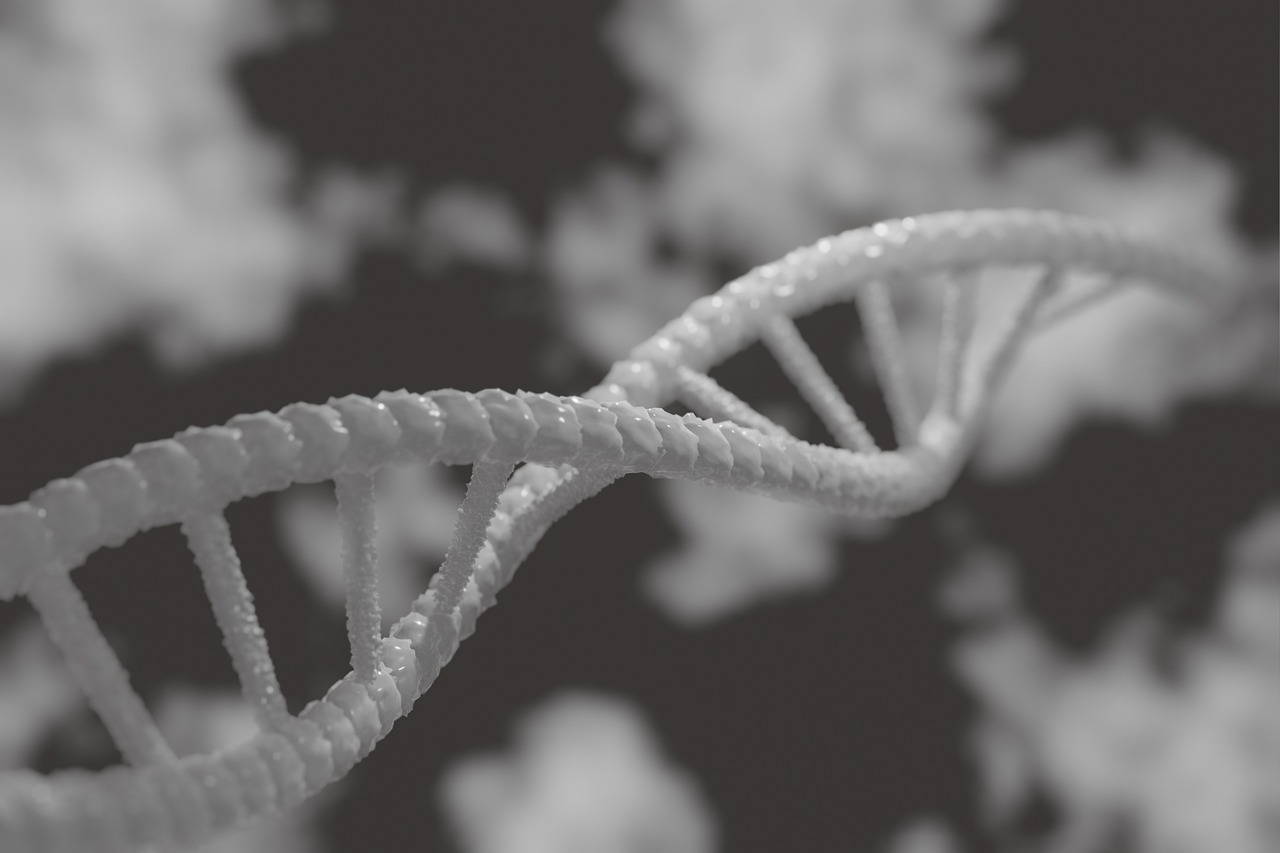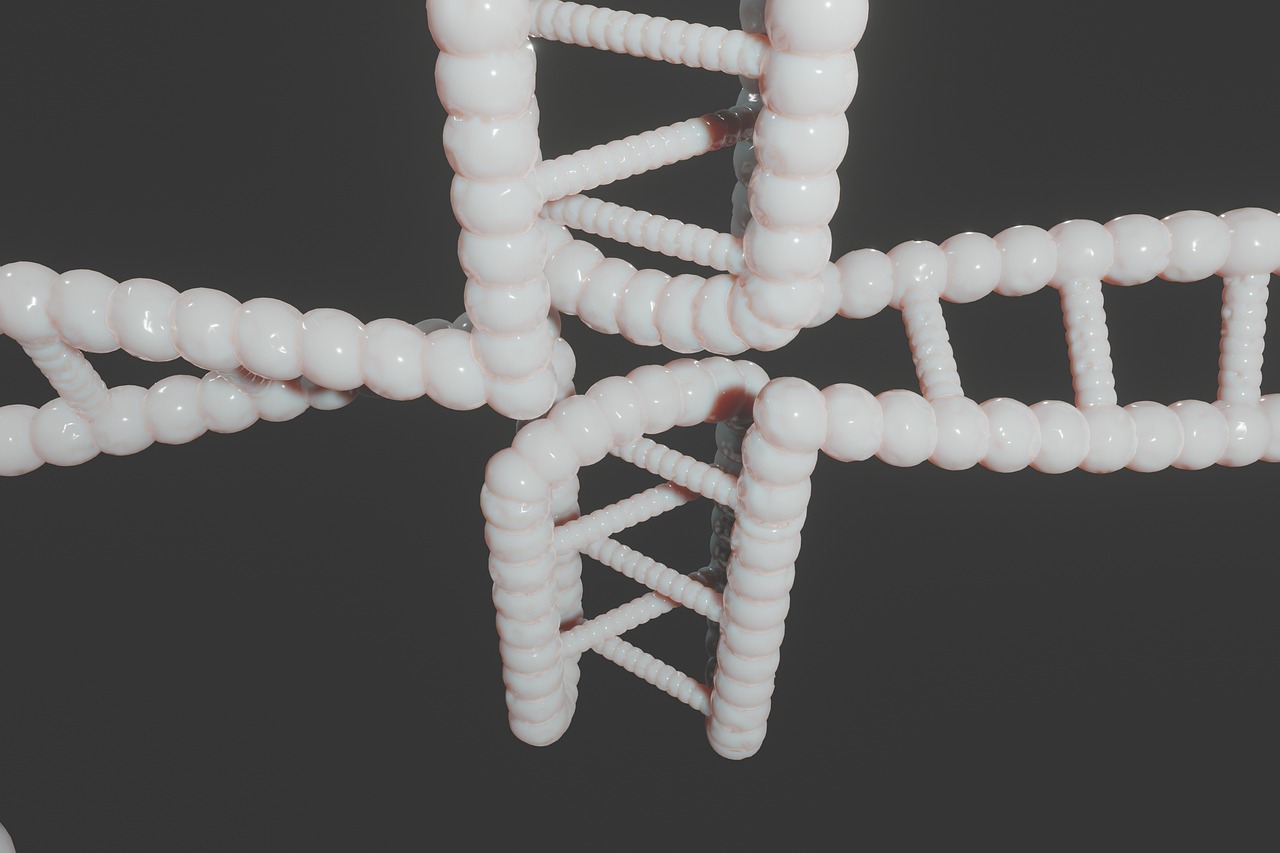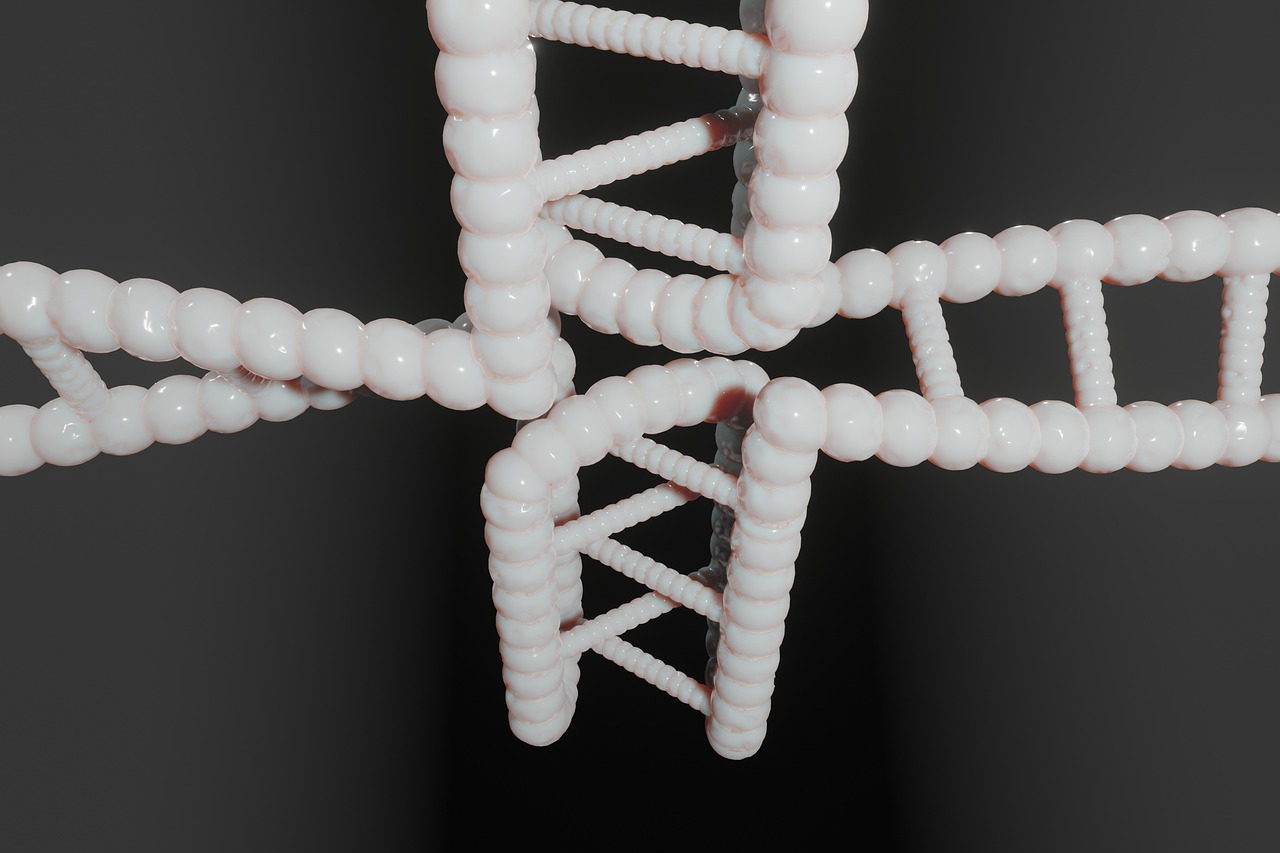The Latest Findings on the Interplay Between Genetics and Environment
In recent years, the scientific community has made significant strides in understanding how our genetic makeup interacts with the environment around us. This dynamic relationship is not just a fascinating subject for researchers; it has profound implications for our health, behaviors, and even our personalities. Imagine genetics as a script and the environment as the director of a play. While the script provides the lines, it's the director who decides how those lines are delivered, shaping the performance in unique ways. This article dives deep into the complexities of this interplay and sheds light on the latest findings that are reshaping our understanding of human health and development.
One of the most groundbreaking aspects of this research is the realization that genetics does not act in isolation. Instead, it is constantly influenced by environmental factors such as diet, lifestyle choices, and even social interactions. For example, two individuals may share the same genetic predisposition for a particular disease, but their risk levels can differ dramatically based on their lifestyle choices. This fascinating interaction raises important questions: How much control do we really have over our health? And how can we leverage this knowledge to improve our well-being?
Recent studies have highlighted the importance of understanding these interactions, particularly in the context of chronic diseases. Conditions such as diabetes, heart disease, and even certain types of cancer have been shown to have a strong genetic component, but environmental factors play a crucial role in their expression. For instance, a person with a genetic predisposition to obesity may remain healthy if they maintain a balanced diet and regular exercise. Conversely, another individual with the same genetic background might develop health issues due to poor lifestyle choices. This underscores the necessity of a holistic approach to health that considers both genetic and environmental factors.
Furthermore, the field of epigenetics has emerged as a key player in this conversation. Epigenetics studies how environmental factors can cause changes in gene expression without altering the underlying DNA sequence. This means that our behaviors and environmental exposures can literally turn genes on or off, affecting everything from our immune responses to our mental health. It's like having a dimmer switch on your genes—some may be fully illuminated, while others remain in the shadows, depending on the environmental context.
As we delve deeper into the interplay between genetics and the environment, it becomes clear that the implications extend far beyond individual health. Public health strategies can be significantly enhanced by recognizing these interactions. For instance, tailored interventions that consider both genetic predispositions and environmental factors could lead to more effective prevention and treatment strategies. Imagine a world where healthcare providers can offer personalized recommendations based on a patient's unique genetic and environmental profile—this is the future that researchers are striving towards.
In conclusion, the latest findings on the interplay between genetics and the environment reveal a complex and intricate relationship that shapes our lives in ways we are only beginning to understand. As we continue to explore this fascinating frontier, the potential for improved health outcomes and personalized medicine becomes increasingly tangible. The journey into the depths of our biology and the environment is just beginning, and it promises to be an exciting one.
- What is the primary focus of research on genetics and environment?
Research primarily focuses on understanding how genetic predispositions are influenced by environmental factors, affecting health outcomes and behaviors. - How does epigenetics fit into this discussion?
Epigenetics studies how environmental influences can modify gene expression without changing the DNA sequence, highlighting the dynamic relationship between genes and the environment. - Can lifestyle changes really impact genetic predispositions?
Yes, lifestyle choices such as diet and exercise can significantly influence the expression of genes associated with various health conditions. - What are the implications for public health?
Understanding the interplay between genetics and environment can lead to more effective public health strategies and personalized medicine approaches.

Understanding Genetic Influences
This article explores recent research highlighting how genetic predispositions interact with environmental factors, shaping individual traits and health outcomes. Discover the complexities of this dynamic relationship and its implications for various fields.
When we think about what makes us who we are, genetics often comes to mind as a major player. From the color of our eyes to the likelihood of developing certain health conditions, our genes significantly influence our traits and behaviors. Recent studies have provided fascinating insights into how specific genes contribute to various conditions, revealing a complex interplay between our genetic makeup and the environments we inhabit. For instance, researchers have identified certain genes that predispose individuals to conditions like diabetes or heart disease, but these genetic factors don't operate in isolation. They are influenced by a multitude of environmental contexts, such as lifestyle choices, socioeconomic status, and even geographical location.
To illustrate this point, consider the example of height. Genetics plays a fundamental role in determining how tall we grow, but environmental factors such as nutrition during childhood can significantly impact this trait. A child with a genetic predisposition for height may not reach their potential if they experience malnutrition. This phenomenon highlights the importance of understanding that while our genes set the stage, the environment plays a crucial role in shaping the final performance.
Moreover, the field of genetics is evolving rapidly, with advancements in technology allowing scientists to explore these gene-environment interactions in unprecedented detail. One area of focus is the identification of gene variants that may interact with specific environmental exposures. For example, individuals with a certain genetic variant may be more susceptible to the harmful effects of air pollution, leading to respiratory issues. This kind of research not only deepens our understanding of genetic influences but also emphasizes the importance of considering environmental factors in health outcomes.
In summary, while genetics provides the blueprint for our biological makeup, it is the interaction with environmental factors that ultimately shapes our health and well-being. This understanding is crucial for developing more effective public health strategies and personalized medicine approaches, as we begin to appreciate the intricate dance between our genes and the world around us.
- What are genetic influences? Genetic influences refer to the ways in which our genes affect our traits, behaviors, and health conditions.
- How do environmental factors interact with genetics? Environmental factors such as lifestyle, diet, and exposure to toxins can modify how our genes express themselves, impacting our overall health.
- Why is understanding this interplay important? Understanding the interplay between genetics and environment can lead to better public health strategies, disease prevention methods, and personalized medicine approaches.

The Role of Environment
When we think about what makes us who we are, our minds often drift toward genetics. Sure, our DNA is a crucial piece of the puzzle, but let’s not forget the immense influence of the environment. Imagine your genes as a set of blueprints for a house. Now, the environment is like the construction crew and materials; without them, those blueprints remain just that—blueprints. Recent research has illuminated how factors such as lifestyle choices, diet, and even exposure to toxins can dramatically shape our health and development.
Environmental factors can either amplify or mitigate genetic predispositions. For instance, an individual may carry genes that predispose them to obesity, but if they lead a physically active lifestyle and maintain a healthy diet, they might never experience the health issues associated with those genes. This interplay highlights the importance of considering both genetics and environmental influences when examining health outcomes. In fact, studies have shown that the environment can account for a significant portion of the variance in traits and behaviors, sometimes even more than genetics alone.
Let’s break down some of the key environmental factors that play a pivotal role in shaping our health:
- Lifestyle Choices: Daily habits such as exercise, smoking, and alcohol consumption can significantly impact health. For example, regular physical activity can help mitigate the risks associated with genetic predispositions to heart disease.
- Diet: The food we consume is not just fuel; it can also influence gene expression. Nutrient-rich diets can promote wellness and stave off diseases, while poor dietary choices can exacerbate genetic vulnerabilities.
- Toxins: Exposure to environmental toxins—like heavy metals and pollutants—can interact with our genetic makeup, potentially leading to adverse health conditions. Understanding these interactions is crucial for developing effective public health strategies.
The complexity of these interactions cannot be overstated. For instance, consider the phenomenon of gene-environment interactions in the context of mental health. Research indicates that individuals with a genetic predisposition to depression might only manifest symptoms if they experience significant environmental stressors, such as trauma or prolonged stress. This insight underscores the importance of addressing both genetic and environmental factors in mental health interventions.
In summary, the environment plays a critical role in shaping who we are and how we experience health and disease. By understanding the intricate dance between our genetic makeup and the world around us, we can better equip ourselves to make informed decisions that promote overall well-being. The implications of this understanding extend beyond individual health, impacting public health initiatives aimed at disease prevention and health promotion.

Epigenetics: A Bridge Between Genes and Environment
When we think about our genetic makeup, it’s easy to assume that our DNA is the sole architect of who we are. However, the fascinating field of epigenetics reveals that the story is much more intricate. It acts as a bridge, connecting our genes with the environment in a dance that influences our health and behaviors. Imagine your genes as a piano, where epigenetics plays the role of the pianist, deciding which notes to play and when, based on the surrounding atmosphere.
Epigenetics refers to the chemical modifications that affect gene activity without altering the underlying DNA sequence. These modifications can be triggered by various environmental factors, including diet, stress, and toxins. For instance, when we consume certain foods, they can lead to epigenetic changes that either enhance or inhibit gene expression. This means that what you eat can literally influence how your genes perform.
Furthermore, epigenetic changes can be passed down through generations, making it a vital area of study for understanding hereditary conditions. Think of it like a family recipe; while the ingredients might remain the same, the way they are prepared can change dramatically based on the chef’s preferences and the kitchen environment. This is where epigenetics shines, showing us how our lifestyle choices can have lasting effects not just on ourselves, but also on our children and grandchildren.
To illustrate how epigenetics functions as a bridge, consider the following examples:
- Diet: Nutrients like folate and vitamin B12 are crucial for proper epigenetic modifications. A deficiency in these can lead to detrimental changes in gene expression, potentially increasing the risk for diseases.
- Stress: Chronic stress can lead to the addition of chemical tags on DNA, which can silence genes that regulate mood and behavior, leading to mental health issues.
- Toxins: Exposure to environmental toxins, such as heavy metals, can also result in significant epigenetic changes that may predispose individuals to various health conditions.
In summary, epigenetics serves as a crucial link between our genetic blueprint and the world around us. It underscores the idea that while we may inherit certain traits, our environment plays an equally important role in shaping who we become. Understanding this relationship opens the door to new possibilities in healthcare, allowing us to consider not just our DNA, but also how we can modify our environment to promote better health outcomes.
- What exactly is epigenetics? Epigenetics is the study of changes in gene activity that do not involve alterations to the underlying DNA sequence. It explains how environmental factors can influence gene expression.
- Can epigenetic changes be reversed? Yes, some epigenetic changes can be reversed through lifestyle modifications, such as improving diet, reducing stress, and avoiding toxins.
- How does epigenetics affect disease risk? Epigenetic modifications can increase or decrease the likelihood of developing certain diseases by altering how genes are expressed in response to environmental factors.

Impact of Stress on Gene Expression
Stress is an inevitable part of life, but its impact reaches far beyond our emotional state. Recent research has shown that chronic stress can lead to significant changes in gene expression, which in turn can affect our overall health. Imagine your genes as a set of musical notes; stress can change the melody, altering how your body performs its biological symphony. The mechanisms through which stress influences gene expression are complex and multifaceted, involving various biological pathways.
When we experience stress, our bodies release hormones such as cortisol, which can initiate a cascade of reactions at the cellular level. These hormonal changes can lead to epigenetic modifications—essentially, chemical tags that attach to our DNA and influence whether certain genes are turned on or off. This process is akin to flipping a switch; depending on the environmental conditions, some genes may be activated while others are silenced. Over time, these changes can accumulate, leading to long-term health implications.
Interestingly, the effects of stress on gene expression are not just limited to the individual experiencing the stress. Studies have indicated that these epigenetic changes can be passed down through generations, meaning that the stress experienced by one generation may influence the health of their descendants. This phenomenon raises questions about the long-term impact of societal stressors, such as economic hardship or environmental disasters, and how they can shape the genetic landscape of future populations.
To illustrate this point, consider the following table that summarizes key findings on the impact of stress on gene expression:
| Type of Stress | Gene Expression Changes | Health Implications |
|---|---|---|
| Chronic Psychological Stress | Altered expression of genes related to inflammation | Increased risk of autoimmune diseases |
| Physical Stress (e.g., injury) | Changes in genes involved in tissue repair | Impaired healing and recovery |
| Environmental Stressors (e.g., pollution) | Modification of detoxification genes | Higher susceptibility to chronic diseases |
Moreover, understanding the impact of stress on gene expression opens up new avenues for intervention. By identifying specific genes that are affected by chronic stress, researchers can develop targeted therapies that may help mitigate these effects. Imagine being able to "reset" the switches that stress has flipped, allowing individuals to regain control over their genetic health. This potential for intervention is exciting and highlights the importance of addressing stress as a public health issue.
In summary, the interplay between stress and gene expression is a fascinating area of study that underscores the complex relationship between our environment and our biology. As we continue to unravel these connections, we can better understand how to foster resilience in the face of stress and promote healthier lives for ourselves and future generations.
- What is gene expression? Gene expression is the process by which information from a gene is used to synthesize a functional gene product, often proteins, which perform various functions in the body.
- How does stress affect gene expression? Stress can lead to hormonal changes that result in epigenetic modifications, altering the way genes are expressed and potentially leading to various health issues.
- Can stress-related gene changes be reversed? While some epigenetic changes may be reversible, ongoing research is needed to develop effective strategies for reversing the impact of stress on gene expression.

Nutritional Epigenetics
Nutritional epigenetics is a fascinating field that explores how the foods we consume can influence gene expression without changing the underlying DNA sequence. This means that our dietary choices can have profound effects not only on our health but also on the health of future generations. Imagine your diet as a conductor of an orchestra, where each food item plays a note in the symphony of your genetic makeup. The right combination of nutrients can lead to a harmonious health outcome, while poor dietary choices can create dissonance, potentially leading to disease.
Research has shown that certain nutrients can modify epigenetic markers, which are like switches that turn genes on or off. For instance, folate, found in leafy greens and legumes, plays a critical role in DNA methylation, a process that can silence genes associated with cancer. Similarly, compounds found in fruits and vegetables, such as polyphenols, can promote beneficial epigenetic changes that support cellular health. Here’s a quick look at some key nutrients and their epigenetic impacts:
| Nutrient | Source | Epigenetic Effect |
|---|---|---|
| Folate | Leafy greens, legumes | DNA methylation, cancer risk reduction |
| Omega-3 Fatty Acids | Fish, flaxseeds | Regulation of inflammation-related genes |
| Polyphenols | Berries, green tea | Activation of antioxidant genes |
It's not just what we eat, but also how we eat that matters. The timing of our meals, the balance of macronutrients, and even the way we prepare our food can influence our epigenetic landscape. For example, intermittent fasting has been shown to induce epigenetic changes that may enhance longevity and reduce the risk of age-related diseases. Think of it as giving your genes a break, allowing them to reset and function optimally.
Furthermore, nutritional epigenetics extends beyond individual health; it has implications for public health as well. As we learn more about how diet influences gene expression, we can develop targeted nutritional interventions aimed at preventing diseases linked to genetic predispositions. For instance, if certain populations are genetically predisposed to conditions like diabetes or heart disease, tailored dietary guidelines could help mitigate these risks effectively.
In conclusion, nutritional epigenetics is an exciting frontier in understanding the intricate relationship between our diet and our genes. By making conscious dietary choices, we can not only enhance our health but also potentially influence the genetic destinies of future generations. So, the next time you sit down for a meal, remember that you're not just feeding your body; you're also communicating with your genes.
- What is nutritional epigenetics? Nutritional epigenetics studies how dietary choices affect gene expression without altering the DNA sequence itself.
- How can I improve my epigenetic health through diet? Focus on a balanced diet rich in fruits, vegetables, whole grains, and healthy fats while minimizing processed foods.
- Can epigenetic changes be passed to future generations? Yes, some epigenetic changes induced by nutrition can be inherited, affecting the health of future generations.

Gene-Environment Interactions in Disease
Understanding how genes and environmental factors collaborate is crucial for disease prevention. The relationship between our genetic makeup and the environment we inhabit is not just a matter of nature versus nurture; it's a complex interplay that can significantly influence our susceptibility to various diseases. For instance, consider a person with a genetic predisposition to diabetes. While their genes may set the stage, it’s often their lifestyle choices—such as diet and physical activity—that determine whether they will develop the disease. This is where the fascinating world of gene-environment interactions comes into play.
Research has shown that certain genetic variants can increase the risk of diseases, but these risks can be exacerbated or mitigated by environmental factors. A classic example is the interaction between genetic predispositions to heart disease and lifestyle choices like smoking, diet, and exercise. In fact, studies suggest that individuals with a family history of heart disease who maintain a healthy lifestyle can significantly reduce their risk of developing the condition.
To illustrate this further, let's take a look at a few diseases where gene-environment interactions are particularly evident:
| Disease | Genetic Risk Factors | Environmental Influences |
|---|---|---|
| Type 2 Diabetes | Variants in genes like TCF7L2 | Obesity, physical inactivity, and diet |
| Breast Cancer | Mutations in BRCA1 and BRCA2 | Hormonal factors, lifestyle, and environmental toxins |
| Asthma | Genetic predisposition linked to IL4 gene | Allergens, pollution, and respiratory infections |
This table highlights how specific diseases can be influenced by both genetic and environmental factors. The interplay is so intricate that it often leads to unexpected outcomes. For example, individuals carrying the BRCA mutations may not develop breast cancer if they lead a healthy lifestyle and avoid known carcinogens. This showcases the potential for preventative measures based on understanding these interactions.
Moreover, gene-environment interactions are not just limited to chronic diseases. They also play a role in mental health disorders. For instance, someone with a genetic predisposition to depression may only experience symptoms when faced with significant life stressors. This highlights the importance of considering both genetic and environmental factors when assessing mental health risks.
In summary, recognizing the intricate relationships between our genetic predispositions and environmental exposures can pave the way for more effective disease prevention strategies. It encourages a holistic approach to health, where we consider not just our genes but also our lifestyle choices and surroundings. This understanding is essential for developing targeted interventions that can help mitigate disease risk and promote overall well-being.
- What are gene-environment interactions? Gene-environment interactions refer to the ways in which genetic predispositions and environmental factors influence each other, affecting health outcomes and disease susceptibility.
- Can lifestyle changes mitigate genetic risks? Yes, lifestyle changes such as diet, exercise, and avoiding harmful substances can significantly reduce the risk of diseases associated with genetic predispositions.
- Are gene-environment interactions the same for everyone? No, gene-environment interactions can vary widely among individuals due to differences in genetic makeup, lifestyle choices, and environmental exposures.

Implications for Public Health
The intricate dance between genetics and environmental factors has profound implications for public health. Understanding this dynamic interplay is not just an academic exercise; it is essential for developing effective health strategies that can significantly reduce disease risk across populations. As we delve into this fascinating relationship, we uncover how both genetic predispositions and environmental influences can shape health outcomes, ultimately guiding public health policies and practices.
One of the most significant implications is the potential for targeted interventions. By recognizing that certain populations may be genetically predisposed to specific health conditions, public health officials can tailor preventative measures more effectively. For instance, if a community has a high prevalence of a genetic marker associated with cardiovascular disease, health programs can focus on promoting heart-healthy lifestyles and monitoring at-risk individuals more closely. This proactive approach not only enhances individual health but also alleviates the burden on healthcare systems.
Furthermore, the integration of genetic and environmental data can lead to more informed public health policies. For example, consider the rising incidence of obesity, which is influenced by both genetic factors and environmental conditions such as food availability and socioeconomic status. By analyzing these factors, public health officials can implement community-based interventions that address the root causes of obesity, such as improving access to healthy foods and creating safe spaces for physical activity.
In addition, the concept of health equity comes into play. Recognizing that genetic predispositions can vary across different ethnic and socioeconomic groups allows for a more nuanced understanding of health disparities. Public health initiatives can then be designed to address these disparities, ensuring that all individuals have equal access to health resources and interventions. This targeted approach can help bridge the gap in health outcomes between different populations.
Moreover, the rise of personalized medicine, which considers both genetic makeup and environmental factors, is revolutionizing how we approach healthcare. By incorporating genetic testing into routine health assessments, healthcare providers can deliver personalized treatment plans that account for an individual's unique genetic predispositions and environmental influences. This not only enhances treatment efficacy but also empowers patients to take an active role in their health management.
To sum it up, the implications of understanding the interplay between genetics and environment for public health are vast and transformative. As we continue to uncover the complexities of this relationship, we pave the way for more effective health strategies, equitable access to care, and ultimately, improved health outcomes for all. The future of public health lies in embracing this multifaceted approach, ensuring that we consider both the genetic and environmental factors that shape our health.
- What is the significance of understanding gene-environment interactions?
Understanding these interactions helps us develop targeted health interventions and policies that address specific risks in different populations. - How can public health initiatives benefit from genetic research?
By incorporating genetic insights, public health initiatives can be tailored to address the unique needs of communities, ultimately improving health outcomes. - What role does personalized medicine play in public health?
Personalized medicine allows healthcare providers to create individualized treatment plans that consider both genetic predispositions and environmental factors, enhancing treatment effectiveness.

Personalized Medicine Approaches
In the ever-evolving landscape of healthcare, personalized medicine stands out as a beacon of hope, offering tailored treatment strategies that consider both genetic and environmental factors. Imagine walking into a doctor's office and receiving a treatment plan uniquely designed for you, like a custom-tailored suit that fits perfectly. This is the essence of personalized medicine, where the one-size-fits-all approach is tossed aside in favor of a more nuanced understanding of individual health.
At the heart of personalized medicine is the understanding that our genetic makeup plays a crucial role in how we respond to treatments. For instance, some patients might metabolize medications differently based on their genetic variants, leading to variations in efficacy and side effects. By identifying these genetic markers, healthcare providers can prescribe medications that are not only more effective but also minimize the risk of adverse reactions. This approach is particularly significant in fields such as oncology, where specific genetic mutations can determine the best course of treatment for cancer patients.
However, genetics is just one piece of the puzzle. Environmental factors such as diet, lifestyle, and exposure to toxins can also influence how our bodies react to medications. For example, a person’s response to a cholesterol-lowering drug may vary greatly depending on their dietary habits or exercise routine. This interplay highlights the necessity of integrating both genetic and environmental data to create a comprehensive treatment plan. In fact, many researchers are advocating for a multi-dimensional approach that considers:
- Genetic Information: Insights from genomic sequencing.
- Environmental Context: Lifestyle choices and exposure to various factors.
- Patient History: Previous health issues and family medical history.
Furthermore, advancements in technology are making it easier than ever to gather and analyze this data. With the rise of wearable health devices and mobile health applications, patients can now track their health metrics in real-time. This data can be invaluable in adjusting treatment plans dynamically, ensuring that they remain effective as a patient's circumstances change. Imagine having a health coach in your pocket, constantly updating your care plan based on your daily activities and health readings!
Despite the promising outlook of personalized medicine, there are challenges to overcome. Issues like data privacy, the need for extensive research, and the potential for unequal access to these advanced treatments must be addressed. As we navigate these challenges, the potential benefits of personalized medicine are immense. By focusing on the unique combination of genetics and environment, we can pave the way for more effective and individualized healthcare solutions that cater to the needs of each patient.
- What is personalized medicine? Personalized medicine refers to tailored treatment plans that consider an individual's genetic makeup and environmental factors.
- How does genetics influence treatment? Genetic variations can affect how individuals metabolize medications, impacting their effectiveness and potential side effects.
- Can environmental factors affect treatment outcomes? Yes, lifestyle choices, diet, and exposure to toxins can significantly influence how treatments work for an individual.
- What are the challenges of personalized medicine? Challenges include data privacy concerns, the need for extensive research, and ensuring equal access to advanced treatments.

Future Research Directions
The field of genetics and its interplay with environmental factors is evolving at a breakneck pace, revealing layers of complexity that were previously unimaginable. As we look to the future, several exciting research directions are emerging that promise to deepen our understanding of how genes and environment shape health outcomes. One critical area of focus is the exploration of multi-omics approaches, which integrate genomics, transcriptomics, proteomics, and metabolomics. This holistic view allows researchers to see the bigger picture, examining how different biological layers interact in response to environmental stimuli.
Another promising avenue is the study of longitudinal data, which tracks individuals over time to observe how genetic predispositions and environmental exposures influence health trajectories. By following a cohort from childhood through adulthood, scientists can gather invaluable insights into the timing and nature of gene-environment interactions. For instance, understanding how early-life stressors can activate certain genes may reveal critical windows for intervention.
Furthermore, the role of the microbiome in gene-environment interactions is gaining traction. As research uncovers the intricate relationship between our gut bacteria and our genetic expression, we can start to see how dietary choices and lifestyle factors can modify health outcomes. Imagine your gut as a bustling city, where the bacteria are the inhabitants, and your genes are the city's infrastructure. The health of that city depends not just on the buildings (genes) but also on the people (microbiome) living there and how they interact with their environment. Future studies could focus on how altering the microbiome through diet or probiotics might influence gene expression and, consequently, health.
Additionally, the field of epigenetics will likely continue to expand, particularly in understanding how environmental factors such as pollution, diet, and lifestyle choices lead to epigenetic modifications. Researchers are particularly interested in how these changes can be passed down through generations, creating a legacy of health or disease. This could involve studying families with a history of certain conditions to see how environmental factors have influenced their genetic expression over time.
Finally, the integration of artificial intelligence (AI) and machine learning into genetic research is poised to revolutionize the field. By analyzing vast datasets of genetic and environmental information, AI can identify patterns and correlations that might be missed by traditional methods. Imagine having a super-intelligent assistant that can sift through years of research and data to provide insights on how specific genetic markers interact with environmental factors. This could lead to more targeted and effective public health interventions.
As we delve deeper into these areas of research, it's essential to keep an open dialogue about the ethical implications of our findings. How do we ensure that the knowledge we gain is used responsibly? How can we prevent genetic discrimination based on predispositions revealed through research? Addressing these questions will be crucial as we forge ahead into this uncharted territory.
- What is the significance of gene-environment interactions? Gene-environment interactions are crucial for understanding how both genetics and external factors contribute to health and disease. They help us identify at-risk populations and develop targeted interventions.
- How can future research impact personalized medicine? Future research can lead to more tailored treatment options based on individual genetic and environmental profiles, enhancing the effectiveness of personalized medicine.
- What role does the microbiome play in genetic expression? The microbiome can influence gene expression by interacting with dietary choices and environmental factors, highlighting the importance of gut health in overall well-being.
- Why is ethical consideration important in genetic research? As we uncover more about genetics, ethical considerations help prevent misuse of information, such as genetic discrimination, and ensure that research benefits society as a whole.
Frequently Asked Questions
- What is the relationship between genetics and environment?
The relationship between genetics and environment is complex and dynamic. Genetics provides the blueprint for traits and behaviors, while environmental factors such as lifestyle, diet, and exposure to toxins can influence how these genetic predispositions manifest. It's like having a recipe; the ingredients (genes) determine the dish's potential, but how you cook it (environment) can change the final outcome significantly.
- How does epigenetics play a role in gene expression?
Epigenetics acts as a bridge between our genes and the environment. It refers to changes that affect gene activity without altering the DNA sequence itself. For example, environmental factors like diet and stress can lead to epigenetic modifications that either enhance or silence certain genes. Imagine a dimmer switch for lights; epigenetics can brighten or dim the expression of genes based on external influences.
- Can stress affect my genetic health?
Absolutely! Chronic stress can lead to epigenetic changes that modify how genes are expressed. This means that prolonged stress can potentially increase the risk of various health issues by altering the genetic pathways that regulate our body's responses. It's like a chain reaction; one stressful event can set off a series of changes that affect your health in the long run.
- What role does nutrition play in genetic expression?
Nutritional epigenetics is a fascinating field that studies how our diet influences gene expression. Certain nutrients can modify how our genes behave, impacting metabolism and disease risk. Think of it as fuel for a car; the type of fuel you choose can determine how well your car runs, similarly, the nutrients you consume can optimize or hinder your genetic performance.
- How do gene-environment interactions influence disease?
Gene-environment interactions are crucial in understanding disease susceptibility and progression. For instance, individuals with a genetic predisposition to a disease may only develop it if exposed to specific environmental triggers. It's like a match and gasoline; the match (genetic predisposition) alone won't start a fire unless it comes into contact with gasoline (environmental factors).
- What are the implications of this research for public health?
Recognizing the interplay between genetics and environment is vital for developing effective public health strategies. This understanding can inform interventions and policies aimed at reducing disease risks in populations. By tailoring health initiatives to consider both genetic and environmental factors, we can create more targeted and effective health solutions.
- How does personalized medicine relate to genetics and environment?
Personalized medicine uses genetic information to tailor treatment plans for individuals. By integrating environmental factors, healthcare providers can enhance the effectiveness of these treatments. It's akin to customizing a suit; the better the fit (considering both genetics and environment), the more comfortable and effective it will be for the individual.
- What are future research directions in this field?
Emerging research continues to delve into the complexities of genetic and environmental interactions. Future studies may explore new ways to identify these interactions and their implications for health science. This could lead to groundbreaking discoveries that further illuminate how we can optimize health outcomes by understanding the intricate dance between our DNA and the world around us.



















